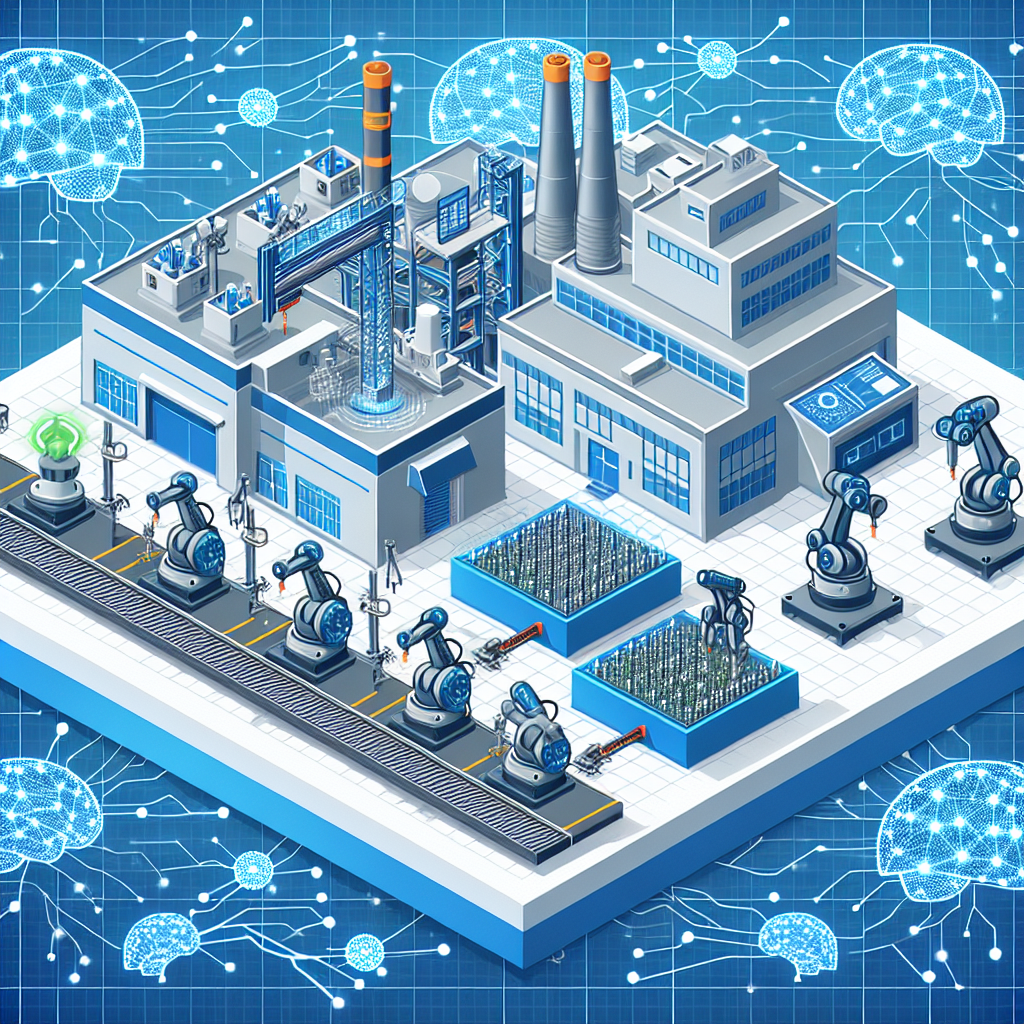In recent years, the integration of artificial intelligence (AI) in manufacturing processes has revolutionized the way factories are designed and laid out. Smart factories, also known as Industry 4.0, rely on AI technology to optimize efficiency, productivity, and overall performance. In this article, we will explore the role of AI in smart factory design and layout, and how it is shaping the future of manufacturing.
AI in Smart Factory Design
AI plays a crucial role in the design of smart factories by utilizing data analytics and machine learning algorithms to optimize processes and workflows. One of the key aspects of AI in smart factory design is predictive modeling, which allows manufacturers to simulate different layouts and scenarios to determine the most efficient and cost-effective design.
By analyzing historical data and real-time information, AI can predict potential bottlenecks, identify opportunities for improvement, and optimize the layout of the factory floor. This not only improves productivity but also reduces waste and enhances overall operational efficiency.
Another important aspect of AI in smart factory design is the use of digital twins. Digital twins are virtual replicas of physical assets, such as machines, equipment, and production lines, that mimic their behavior in real-time. By creating digital twins of the factory layout, manufacturers can test different configurations, identify potential issues, and optimize production processes before implementing changes in the physical environment.
AI-driven design tools also enable manufacturers to create more flexible and adaptable layouts that can easily accommodate changes in production requirements or market demands. By using AI to analyze data and optimize layouts, manufacturers can achieve greater flexibility, scalability, and responsiveness in their operations.
AI in Smart Factory Layout
AI is also instrumental in optimizing the layout of smart factories by analyzing data from sensors, cameras, and other IoT devices to improve efficiency and streamline workflows. By collecting and analyzing data in real-time, AI can identify patterns, trends, and anomalies that affect production processes and make data-driven decisions to optimize the layout of the factory floor.
For example, AI can analyze the movement of materials, equipment, and workers within the factory to identify inefficiencies and bottlenecks in the workflow. By optimizing the layout of machines, workstations, and storage areas, AI can reduce production lead times, minimize errors, and improve overall productivity.
AI-powered robots and autonomous vehicles are also increasingly being used in smart factories to automate material handling and transportation tasks. By using AI algorithms to navigate through the factory floor, robots and autonomous vehicles can efficiently transport materials, components, and finished products between different workstations, reducing manual labor and improving overall efficiency.
FAQs
Q: What are the benefits of using AI in smart factory design and layout?
A: AI in smart factory design and layout offers numerous benefits, including improved productivity, efficiency, flexibility, and scalability. By using AI to optimize processes and workflows, manufacturers can reduce waste, minimize errors, and enhance overall operational performance.
Q: How does AI help in predicting potential bottlenecks and optimizing factory layouts?
A: AI uses data analytics and machine learning algorithms to analyze historical data and real-time information, allowing manufacturers to simulate different layouts and scenarios to identify potential bottlenecks and optimize the layout of the factory floor. By predicting potential issues and optimizing layouts, manufacturers can improve productivity and reduce operational costs.
Q: What is the role of digital twins in smart factory design?
A: Digital twins are virtual replicas of physical assets, such as machines, equipment, and production lines, that mimic their behavior in real-time. By creating digital twins of the factory layout, manufacturers can test different configurations, identify potential issues, and optimize production processes before implementing changes in the physical environment.
Q: How are AI-powered robots and autonomous vehicles used in smart factories?
A: AI-powered robots and autonomous vehicles are used in smart factories to automate material handling and transportation tasks. By using AI algorithms to navigate through the factory floor, robots and autonomous vehicles can efficiently transport materials, components, and finished products between different workstations, reducing manual labor and improving overall efficiency.
In conclusion, AI is playing a pivotal role in transforming the way factories are designed and laid out, enabling manufacturers to achieve greater efficiency, productivity, and flexibility in their operations. By harnessing the power of AI technologies such as predictive modeling, digital twins, and autonomous systems, smart factories are poised to revolutionize the manufacturing industry and shape the future of production.

